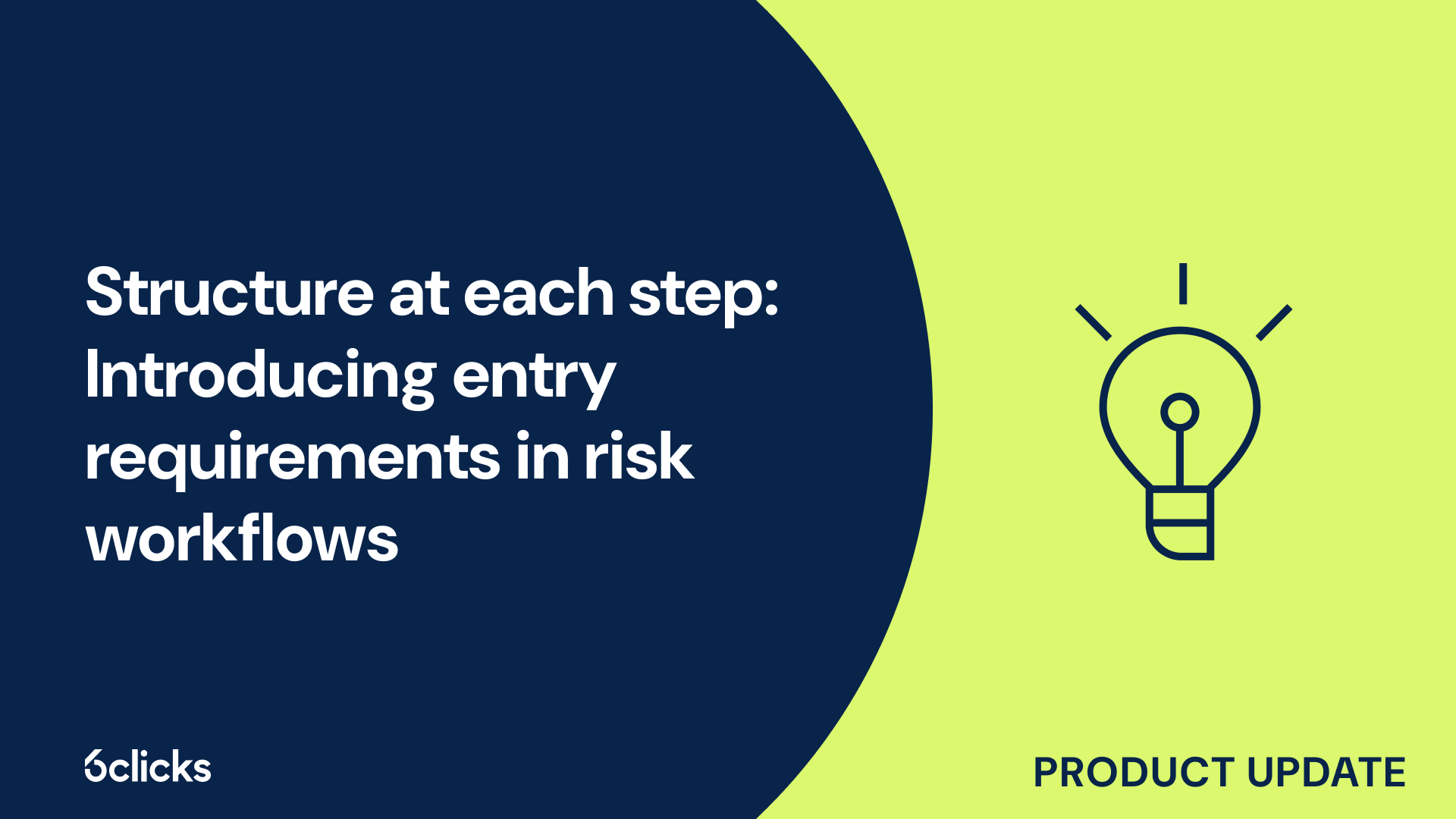
Effective risk management starts with a well-defined process. That means setting clear requirements and expectations at every stage of the risk lifecycle, from identification all the way to resolution. Without the right guardrails, risks can move forward with missing data, unclear ownership, or incomplete assessments, delaying response and increasing exposure. Today I’m thrilled to share the latest update to our risk workflow functionality in 6clicks, specifically designed to address this common pitfall and help teams bring greater structure, control, and consistency to their risk management processes. Let’s dive right in:
How can teams use risk workflow to strengthen risk governance?
The risk workflow functionality in 6clicks enables users to define custom risk workflow stages and tailor their risk management process according to their organization’s specific needs and requirements. You can customize the default workflow stages (Triage, Assess, Active, Review, and Closed) or create your own, and set up the different actions that users can do at each stage. This involves configuring details such as:
-
Which stages are directly before or after the selected stage in the workflow
-
What fields can be accessed at the selected stage
-
What requirements must be met to exit the selected stage
This ensures that your risk management process is standardized, repeatable, and delivers the right outcomes.
What’s new?
To help teams better navigate each stage in their risk workflows, we have now added entry requirements, or the capability to define the criteria for entering a specific workflow stage. This allows users to:
-
Set the minimum requirement an item must meet to enter each workflow stage
-
Define multiple entry and exit requirements for each workflow stage
-
Choose to implement only entry or exit requirements, or both, depending on your needs

With this update, users can control the movement of risks more effectively, allowing them to return to earlier workflow stages when needed and ensure all requirements are fulfilled before any action is taken.
What are the benefits?
By providing the flexibility to define entry or exit requirements for each workflow stage, users have the tools to tailor their approach based on business needs. Whether enforcing actions before a risk advances or ensuring key steps are completed before closing a stage, this feature helps risk and compliance teams improve how they manage, govern, and respond to risk across the lifecycle. Here’s how it benefits risk and compliance teams:
-
Supports accountability – Ensure owners and stakeholders complete required actions before risks progress, reinforcing responsibility at every stage.
-
Enables flexibility – Setting only entry requirements allows users to move backward in the workflow more easily, as those conditions are already fulfilled.
-
Improves data quality – Prevent risks from moving forward with missing or incomplete information, reducing rework and errors.
-
Enhances transparency – Give full visibility into what’s required, what’s been completed, and what’s holding up progress.
-
Streamlines audits – Facilitate audit readiness with fully traceable information on your risk management activities.
With clearly defined entry and exit conditions at each stage, teams can streamline their workflows, enable timely response, and reduce overall risk.
What are the features?
Along with this new feature, we have introduced several enhancements to the risk workflow experience, enabling users to:
-
Get a high-level view of requirements for each workflow stage. From the workflow page, you can quickly see how many entry and exit requirements are configured for every stage.

-
Easily see which requirements are complete and which are still pending. When editing risk details, users get a clear summary of fulfilled and outstanding entry and exit requirements for the current stage. A status indicator shows whether the risk is ready to move forward or if additional requirements need attention.

-
Ensure compliance with all configured stage requirements. The current stage will be disabled if at least one entry or exit requirement has not been met.
As a result, risk and compliance teams get a more structured, effective, and auditable risk workflow.
Transform your risk management process with 6clicks
Take better control of risk and enhance resilience with smart workflows, AI-powered automation, and more robust capabilities from 6clicks.


